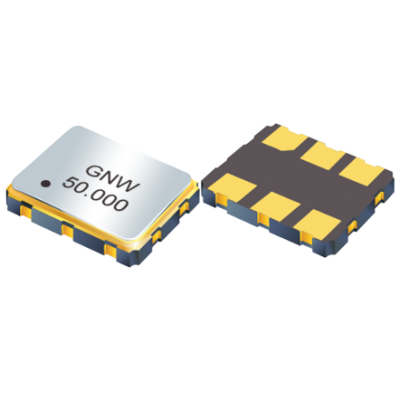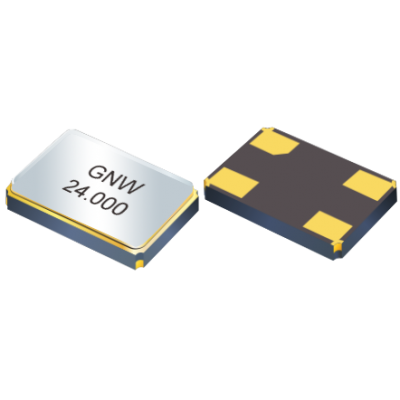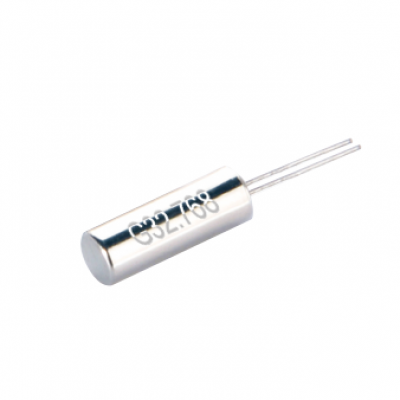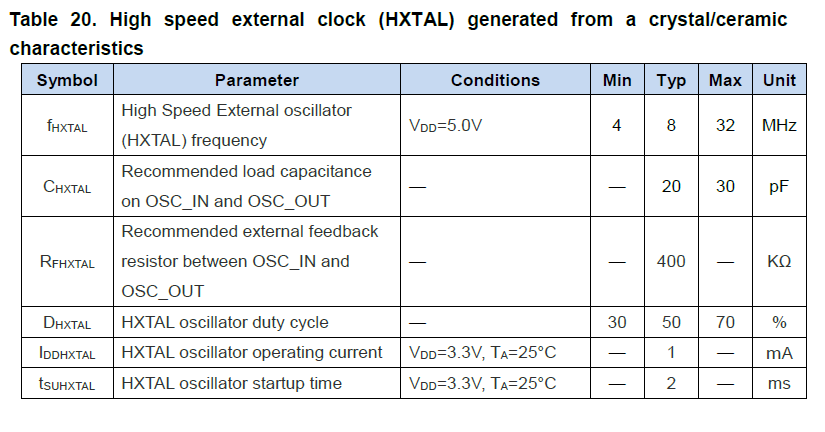
What are Crystals, Resonators, and Oscillators?
Crystals, resonators, and oscillators are devices that determine time or frequency in an electronic system.
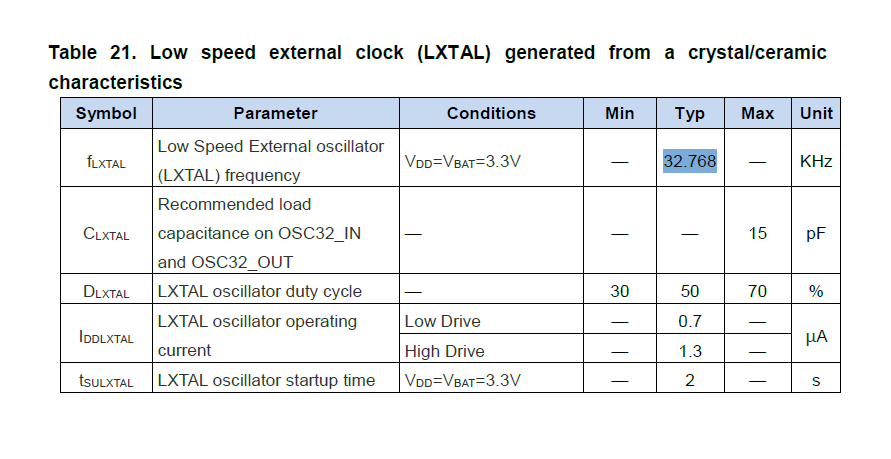
Crystals
Crystals are piezoelectric devices, meaning that mechanical vibrations that change the shape of the crystal occur when electrical charge is applied to them and vice versa. Crystals are predominantly made using quartz, so they are commonly referred to as quartz crystals or quartz crystal resonators. Quartz is favored because of its mechanical strength and because it is widely available and therefore cheap. Quartz is also stable over a long period of time and can withstand a wide range of temperatures. Quartz crystals are cut to a specific size and shape since the size and shape of the crystal determines the frequency that it will oscillate at. The characteristic or resonant frequency of a crystal is inversely proportional to its thickness. In other words, the thinner a crystal is, the higher its frequency. Quartz crystals have two metal plates placed on either side. These metal plates allow connections to be made to the electrical current. An equivalent circuit that matches the behavior of a crystal is an RLC (resistor, inductor, capacitor) circuit.
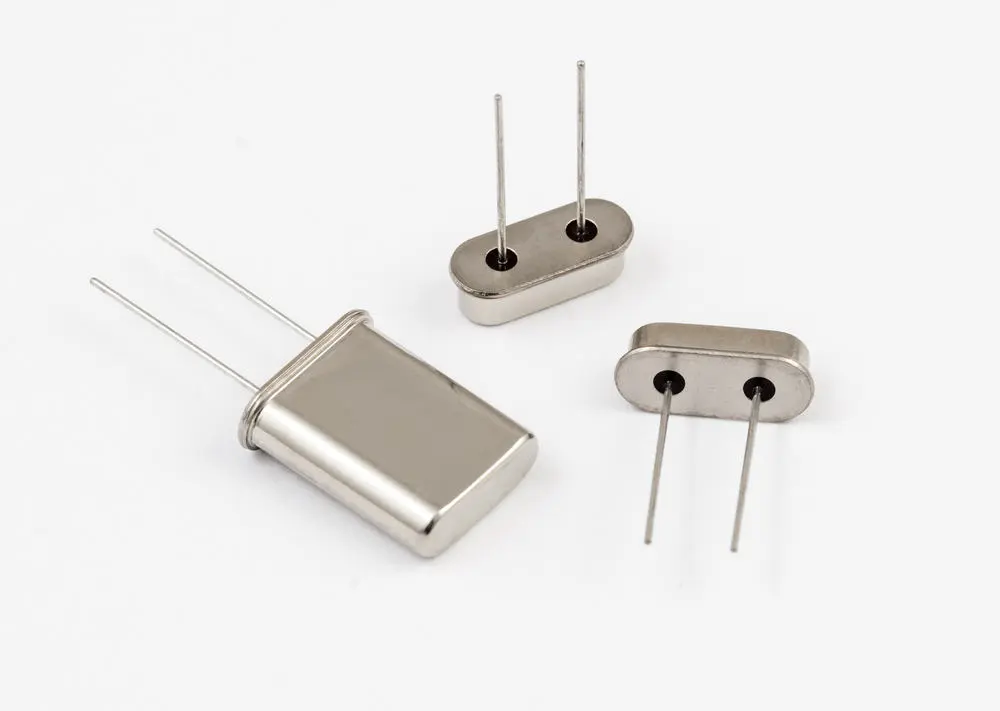
Figure 2: A quartz crystal resonator (Image of a quartz crystal resonator)

(Figure 3 :Crystal, resonator, and oscillator symbol)
Resonators
Resonators are used in similar applications as crystals. The difference is that resonators implement different technologies such as piezoceramic materials or surface acoustic waves to achieve similar behavior as crystals. Due to this difference in material, resonators are more durable but less accurate and have less signal stability when used in similar applications as crystals. A resonator can also be a specifically designed circuit that has a resonant property, such as an LC (inductor, capacitor) circuit. When power is applied, resonators will resonate or oscillate at a given frequency. This frequency is determined by the manufacturer, usually listed on the datasheet, or by the components used to build the resonant circuit. However, due to parasitic resistance, the oscillations produced by resonators will be damped. Thus, a separate driving circuit is used to introduce the proper amount of feedback to create non-damped oscillations.
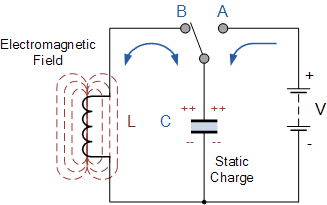
Figure 4: LC circuit (Illustration of an LC circuit)
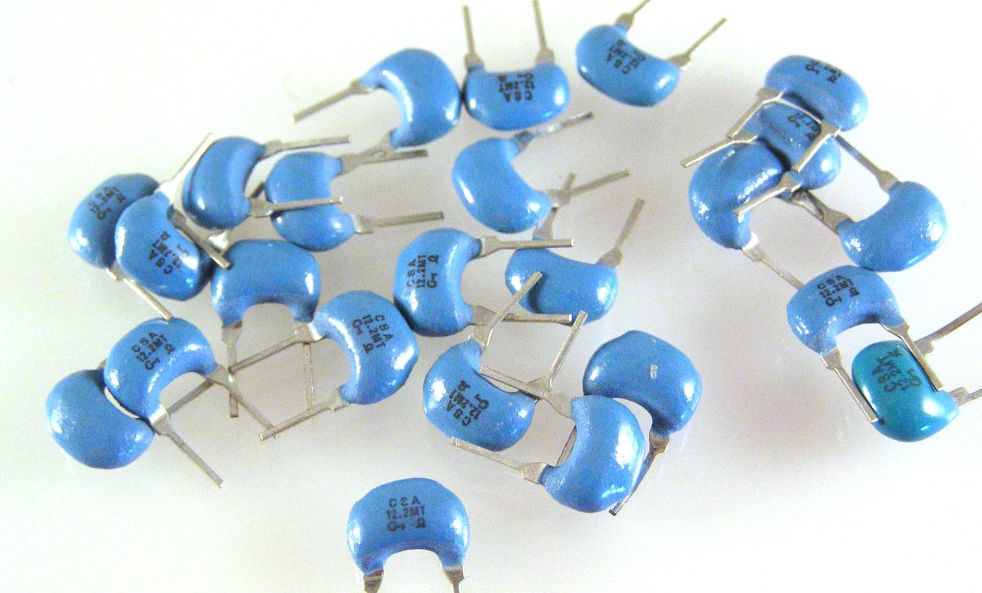
Figure 5: Ceramic resonator(Image of a ceramic resonator)
Oscillators
An oscillator is a circuit that produces repetitive alternating waveform output without the need of any input besides a voltage supply. This output will have a precise frequency based on the components of the circuit. For a circuit to be an oscillator, it must have amplification, positive feedback, and a network that determines frequency. The amplification starts the oscillator, the positive feedback allows it to oscillate and generate an output, and the frequency-determining network allows it to oscillate at the specific frequency. There are many types of oscillators including the quartz crystal oscillator, which uses a quartz crystal as a frequency-determining component.
Figure 6 depicts a Colpitts crystal oscillator, which is a crystal oscillator designed around a common collector amplifier. One resistor network (R1 and R2) sets a DC bias level on the base while the RE resistor sets the output voltage level. A transistor connected in a common collector configuration helps to determine the frequency. Finally, capacitors C1 and C2 reduce the feedback signal. The gain of the transistor limits the max values of C1 and C2, which keeps amplitude low and prevents the crystal from destroying itself by excessive vibration.
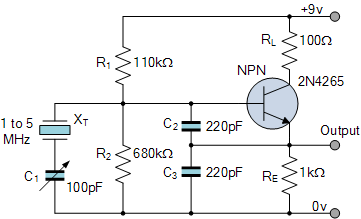
Figure 6: A Colpitts crystal oscillator (Circuit diagram of a Colpitts crystal oscillator)
Cost
It can be cheap to produce crystals and it is often even cheaper to manufacture resonators. When comparing the price of crystals and oscillators, the price of crystals appears to be very low; typical microelectromechanical (MEMS) oscillators are more expensive than crystals per piece. However, for many reasons, it is shortsighted to think that using crystals instead of oscillators will always be cheaper. The use of crystals can cause design issues and costly delays of a product’s release date. Crystals require extra engineering work to fix these issues, meaning the cost to hire someone to do this work must be figured into the overall price. On the other hand, oscillators are flexible and very easy to design with so they do not require extra engineering work to start up properly. Generally speaking, the cost of using oscillators tends to be lower when the quantity of parts used is low, while the cost of using resonators tends to be lower when the quantity of parts used is high, although there are many other factors that must be considered when making this assumption. For instance, oscillators can drive multiple loads which means one oscillator can potentially do the job of multiple crystals.
Lifetime Expectancy
Crystal aging can be described as the long-term frequency change of a crystal over a period of years. Crystal aging occurs more quickly at higher temperatures. Thus, when working with crystal oscillators, it may be a good idea to reduce the required temperature range of the oscillator so the crystal ages less rapidly.
Quartz can produce current without using much energy, which means it has low energy loss compared to other electronic currents. This allows quartz crystal oscillators to have long lifespans.
Crystals can have an indefinite shelf time depending on the conditions in which they are stored. They should be stored in their original packaging, which is usually hermetically sealed to maintain the crystal’s stability. Most crystals can be stored in temperatures ranging from -40 to 85 degrees Celsius without experiencing material aging , although they are generally stored at temperatures closer to normal room temperature (10 to 27 degrees Celsius ). It is also recommended that crystals be stored at a maximum of 30 to 40% relative humidity.
Crystals can age when impurities such as dust and other foreign substances stick to them or enter the package in which they are held. For this reason, crystals should only be handled with tweezers and/or powder-free gloved hands.
Applications
Crystals
Crystals are used as frequency-determining devices in oscillators because they are accurate and stable. They can be used in a straightforward oscillator circuit to make a crystal oscillator (XO). This is a relatively inexpensive method of creating an oscillator and can be found in clock oscillators for microprocessors. Crystals are also used within filters to accept certain signals and reject others. Some filters can use up to six or even eight crystals to do this.
Resonators
Resonators operate similar to crystals. As such, resonators have very similar applications to crystals. They can be used in the same oscillator circuits. They are also used in signal filtering. Due to the less accurate nature of resonators, they are usually used in applications where timing is not as critical. As they are more durable than crystals, they can also be used in applications where reliability is critical.
Oscillators
Oscillators have many applications as they are an easy way to generate a specific frequency. There are two main types of oscillator: RC (resistor, capacitor) and LC (inductor, capacitor). RC circuits are used for low frequency applications while LC circuits are used for high frequency applications. Crystal oscillators can act as RLC circuits which can be found in electronic watches, computers, and radio equipment. Oscillators can also be found in audio and video systems, TVs, alarms, decorative lights, and more.



